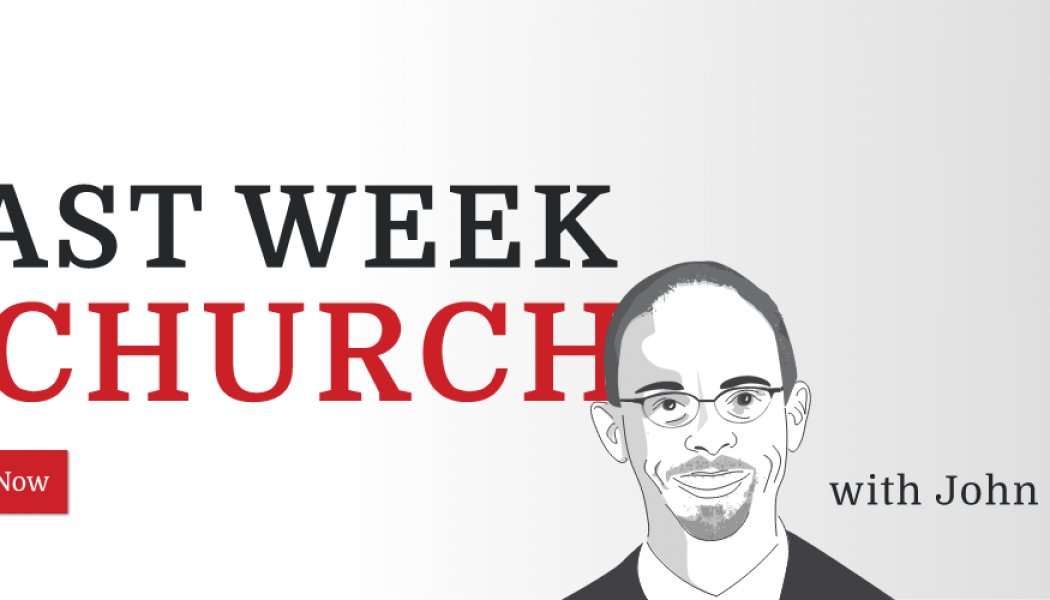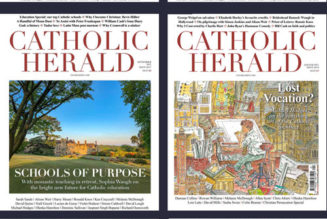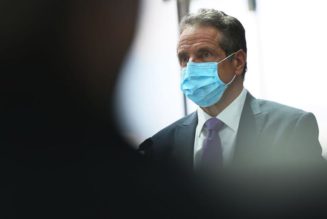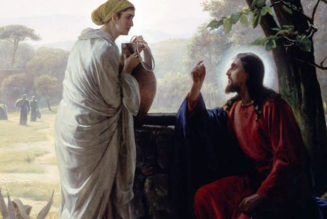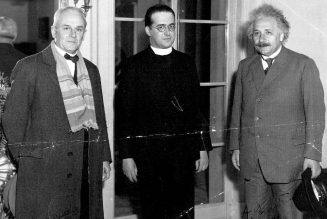ROME – When the Vatican publishes its lengthy report on the rise to power of ex-cardinal and priest Theodore McCarrick today, there will likely be several influential people included both from the American Catholic Church and the Vatican.
The report covers “the Holy See’s institutional knowledge and decision-making process related to former Cardinal Theodore Edgar McCarrick (from 1930 to 2017),” and is the result of a two-year investigation into how McCarrick was able to climb the ecclesial ladder despite rumors about sexual misconduct.
RELATED: Vatican to publish McCarrick report next week after 2-year wait
Previously one of the most powerful clerics in U.S. Catholicism, McCarrick was defrocked last year after credible allegations arose in 2018 that he had sexually abused a minor and had sexually harassed seminarians.
Below are sketches of some of the most relevant names likely to appear in the so-called “McCarrick report,” including whistleblowers and those who were in a position to know what was happening.
Father Boniface Ramsey
A New York pastor who oversees the parish of St. Joseph in Yorkville in upper Manhattan, Ramsey is the McCarrick whistleblower; he was the first person to sound the alarm over McCarrick’s harassment of seminarians while the former cardinal was serving as archbishop of Newark.
RELATED: McCarrick whistleblower calls for laicization, investigation
A former Dominican, Ramsey was part of the faculty of the Immaculate Conception Seminary at Seton Hall University in New Jersey during McCarrick’s time as archbishop of Newark from 1986-2000. He first raised concerns to the seminary’s rector in the late 1980s after hearing seminarians tell stories of how McCarrick would share a bed with them during overnight visits to his beach house.
Nothing happened as a result of Ramsey’s complaints, but several years later, in the early 90s, he was removed from the seminary’s “voting faculty” authorizing seminarians to advance to another year, after barring the advancement of a seminarian who had engaged in abusive sexual behavior with other seminarians and who was close to McCarrick.
Ramsey confided his concerns to Archbishop Thomas Kelly of Louisville, who died in 2011, but was told nothing could be done because of McCarrick’s senior position. He finally decided to write a letter detailing McCarrick’s misconduct at the seminary to the Vatican’s ambassador in the U.S., Archbishop Gabriel Montalvo, in 2000 after McCarrick was appointed Archbishop of Washington.
Though he received no immediate response, in 2006 Ramsey got a letter from then-Archbishop Leonardo Sandri, who formerly served in the powerful Vatican position as substitute for general affairs, asking about a priest from the Newark archdiocese who studied at Immaculate Conception Seminary and was being vetted for a post at a Vatican office.
In the letter, Sandri acknowledged the allegations Ramsey had made six years prior, saying he wrote “with particular reference to the serious matters involving some of the students of the Immaculate Conception Seminary, which in November 2000 you were good enough to bring confidentially to the attention of the then Apostolic Nuncio in the United States, the late Archbishop Gabriel Montalvo.”
No action was ever taken against McCarrick, who retired as archbishop of Washington in 2006.
In 2015, after seeing McCarrick attend the funeral of Cardinal Edward Egan, the former archbishop of New York, Ramsey again tried to sound the alarm, writing to Cardinal Sean O’Malley of Boston, who oversees the Pontifical Commission for the Protection of Minors, but was told that since McCarrick’s victims were adults, the allegations did not fall within the commission’s competency.
Archbishop Carlo Maria Viganò
A career diplomat from northern Italy, Viganò has consistently shown up in the media as a would-be whistleblower in Vatican-related scandals, including the McCarrick saga.
He began his diplomatic career in the Vatican in 1973 and held a string of progressively more significant posts. In 2009 he was appointed as Secretary General of the Governorate of Vatican City State, which among other things, oversees Vatican administration and upkeep of Vatican properties.
Viganò was named Vatican ambassador to the United States in 2011 after his reign in the Governorate came to a tumultuous end amid the “Vatileaks” scandal, in which confidential documents were stolen from then-Pope Benedict XVI’s desk by his personal butler and leaked to the press. Among the most noteworthy documents were two letters from Viganò to Benedict and Cardinal Tarcisio Bertone, the Vatican’s then-Secretary of State, alleging various forms of financial and personal corruption and insisting that his US appointment was an exile for trying to crack down.
Despite his appeal, Viganò was named as the pope’s ambassador to the U.S., a position he held until his retirement in 2016 at the age of 75.
In August 2018, during the World Meeting of Families in Dublin, Ireland, Viganò published a scathing 11-page letter in which he revealed that secret restrictions had been placed on McCarrick in 2008 barring him from celebrating public Masses and from travel, and accused Pope Francis of rehabilitating McCarrick despite knowledge of his misconduct, calling for his resignation.
Cardinal Angelo Sodano
A native of Italy’s Piedmont region, Sodano entered the Holy See’s diplomatic corps in 1959 and worked in various embassies in Latin America, including Ecuador, Uruguay and Chile.
In 1968 he was assigned to the desk for relations with the States in the Vatican’s Secretariat of State, where he stayed for a decade before his 1977 appointment as the Vatican’s ambassador to Chile. He was named as an official for the Secretariat of State in 1989, and two years later, in 1991, he was given a red hat by St. John Paul II and was tapped to become the Vatican’s new Secretary of State.
In 2002, Sodano was named vice-dean of the Vatican’s College of Cardinals, and though he was already over 75, the age when all cardinals and bishops are required to submit their resignations to the pope, he was invited to stay in his role as Secretary of State by John Paul II.
After Benedict XVI was elected pope in 2005, Sodano continued in that role for another year ahead of his retirement in 2006. He was also named as Dean of the College of Cardinals in 2005.
As a key player at the Vatican’s highest level of leadership for years, Sodano knows McCarrick and likely would have been aware of complaints against him that came through the Vatican’s embassy in Washington.
Among other things, Sodano has come under fire for his ties to Chilean abuser Fernando Karadima, a prominent conservative priest known for his ability to attract swaths of vocations in the 1970s and ’80s, and for his defense of Mexican abuser priest Marcial Maciel, founder of the Legionaries of Christ.
He has also been criticized for reportedly attempting to prevent an investigation into the late German Cardinal Hans Hermann Gröer, whom the Vatican stripped of his duties and privileges as cardinal in 1998 after finding him guilty of various forms of sexual abuse and misconduct.
Cardinal Tarcisio Bertone
The longtime Secretary of State for Pope Benedict XVI, Bertone comes from Italy’s Piedmont region, where he taught moral theology and canon law.
He was appointed archbishop of Vercelli by Pope John Paul II in 1991, and just four years later was named secretary of the Congregation for the Doctrine of the Faith, serving under then-Cardinal Joseph Ratzinger.
Bertone was later named archbishop of Genoa by Pope John Paul II, who appointed him to the post in 2002 and who gave him a red hat in 2003. When Benedict XVI was elected in 2005, he named Bertone as his Secretary of State.
Bertone stayed in that role until Francis’s election in 2013, meaning that if any action were taken against a fellow member of the College of Cardinals, however informal, he likely would have been involved.
Cardinal Leonardo Sandri
A native of Buenos Aires, Sandri plays most prominently in the McCarrick case for his 2006 letter to Ramsey, proving the Vatican was aware of allegations against McCarrick as early as 2000, long before they went public in 2018.
In 1971 he entered the Pontifical Ecclesiastical Academy, the Holy See’s de-facto diplomatic training school, and three years later, in 1974, was named as an official in the Vatican’s embassy to Madagascar and Mauritius.
He was brought back to Rome in 1977 as a secretary to the sostituto or “substitute” for general affairs at the Vatican’s Secretariat of State. He held the role until his 1989 assignment as an aide at the Vatican’s embassy to Washington, a role he held for three years.
Sandri was then named to the Prefecture of the Pontifical Household in 1991, and was later brought back into the Vatican’s Secretariat of State as assessor of general affairs. In 1997 he was appointed by St. John Paul II as the Vatican’s ambassador to the troubled nation of Venezuela. Three years later, in 2000, he became the sostituto himself.
That role was held by Sandri until he was appointed in 2007 by Benedict XVI as Prefect of the Vatican’s Congregation for Oriental Churches.
While serving as sostituto in 2006, Sandri and Bertone were allegedly made aware of an “Indictment Memorandum” published by Gregory Littleton, a former priest laicized for abusing minors, who recounted his own abuse by McCarrick and that of several other priests and seminarians.
Sandri’s letter to Ramsey, dated Oct. 11, 2006, confirmed that at least some Vatican officials knew about allegations against McCarrick in regard to seminarians as early as 2000, when Ramsey first brought his concerns to the nuncio, though allegations of the sexual abuse of a minor did not come out until 2018.
Cardinal Stanislaw Dziwiscz
Appointed as chaplain and secretary to then-Archbishop Karol Wojtyla in October 1966, Dziwisz followed Wojtyla to Rome after Wojtyla was elected pope in 1978, serving as his personal secretary – a role he held until John Paul II’s death on April 2, 2005.
He was then named archbishop of Krakow and was given a red hat in 2006. He retired in 2016, and was known to be a friend of Pope Benedict XVI.
There has long been speculation that key aides to John Paul II favored McCarrick’s rise to power – including Dziwisz, who valued the support McCarrick delivered to the Solidarity movement in Poland. The theory is that those architects of the John Paul papacy chose not to look too closely at question marks about McCarrick because he was useful to them in other areas.
Some observers have criticized the role of Pope John Paul II for facilitating McCarrick’s appointment as archbishop of Washington and soon thereafter making him a cardinal, however, other pin the bulk of the responsibility on his closest advisers, including Sodano, Sandri, and Dziwisz.
Cardinal Giovanni Battista Re
A native of Brescia in northern Italy, Re is a career diplomat who for 25 years held various positions in the Vatican, including secretary for the Congregation for Bishops (1987-89); sostituto for general affairs in the Secretariat of State (1989-2000); and finally as prefect of the Congregation for Bishops from 2000-2010.
Re was named head of the bishops’ department in September 2000, just two months prior to McCarrick being named archbishop of Washington in November of that year. However, he reportedly distanced himself from McCarrick’s appointment, saying he was 14th on the list of candidates.
RELATED: Vatican official reportedly pushed back on McCarrick career advances
In 2017, Re was named vice-dean of the College of Cardinals, a role he held until 2000, when he was elected president following Sodano’s resignation from the post.
Cardinal Marc Ouellet
Born in Quebec, Ouellet had a long career as either a professor or rector of seminaries prior to his appointment in 2001 as secretary of the Vatican’s Council for Promoting Christian Unity.
Ouellet was only in that position for a year when he was named Archbishop of Quebec in 2002, a post he held for seven years before his 2010 appointment by Benedict XVI as Prefect of the Vatican’s Congregation for Bishops and President of the Pontifical Commission for Latin America in 2010.
Having held those positions for only three years when Benedict resigned in 2013, Ouellet was confirmed by Francis, meaning he’s stayed in his roles for some eight years now.
He originally stepped on board in Rome four years after McCarrick’s retirement from Washington, but was apparently aware of private appeals to McCarrick from the Vatican to reduce his public role. In a letter published by Ouellet in response to Viganò’s accusations in October 2018, Ouellet confirmed that loose restrictions had been in place, but insisted they were not formal punitive measures.
Referring to written instructions the Congregation for Bishops prepared for Viganò before his transfer to the United States in 2011, Ouellet said “they say nothing at all about McCarrick,” but added, “I told you verbally of the situation of the bishop emeritus who was to observe certain conditions and restrictions because of rumors about his behavior in the past.”
McCarrick “was strongly exhorted not to travel and not to appear in public so as not to provoke further rumors,” he said, but insisted that “it is false to present these measures taken in his regard as ‘sanctions’ decreed by Pope Benedict XVI and annulled by Pope Francis. After re-examining the archives, I certify that there are no such documents signed by either pope.”
Cardinal Donald Wuerl
Like McCarrick, Wuerl also had a long career working around and among Church leadership, beginning with his appointment as a secretary to Pittsburgh Bishop John Wright after his ordination in 1966.
Wright, appointed prefect of the Congregation for Clergy in 1969, took Wuerl with him to Rome. Wuerl stayed with Wright until his death ten years later, and then returned to Pittsburgh where he was named rector of the St. Paul Seminary.
He held that position from 1981-1985, when he was appointed auxiliary bishop of Seattle. He then had a string of increasingly important episcopal posts, including his nomination as bishop of Pittsburg in 1988, and his appointment as McCarrick’s successor in Washington in 2000. He was made a cardinal by Pope Benedict XVI in 2010.
Wuerl, who had become an influential figure in both US Catholicism and in Rome, having been appointed a member of the Congregation for Bishops by Pope Francis in 2013, came under harsh scrutiny following the publication of a Pennsylvania Grand Jury report in August 2018 – just two months after the McCarrick scandals went public – investigating clerical sexual abuse in six of its dioceses, including Pittsburg.
Once the report came out, Wuerl was criticized for his handling of abusers during his time as bishop of Pittsburg in the late 1980s and 1990s, specifically for allowing priests who had been accused of abuse to retire in good standing, allowing them to continue receiving their pension stipend.
In the fallout from the report, Wuerl resigned from his post in Washington in October 2018 over increased pressure he faced from American Catholics and survivor advocacy groups.
At the time, Wuerl argued that he knew nothing about the accusations against McCarrick. Yet correspondence obtained by Crux in May 2019 from an ex-aide to McCarrick confirmed that Wuerl not only knew about the allegations, but he was also aware that the Vatican had asked McCarrick to maintain a low profile in 2008.
RELATED: McCarrick correspondence confirms restrictions, speaks to Wuerl and China
Wuerl, who will turn 80 this week, is expected to retire from his post at the Congregation for Bishops after reaching the mandatory retirement age.
Follow Elise Ann Allen on Twitter: @eliseannallen
Join Our Telegram Group : Salvation & Prosperity
